Xugang Wu
Exploiting Global Graph Homophily for Generalized Defense in Graph Neural Networks
Jun 06, 2024Abstract:Graph neural network (GNN) models play a pivotal role in numerous tasks involving graph-related data analysis. Despite their efficacy, similar to other deep learning models, GNNs are susceptible to adversarial attacks. Even minor perturbations in graph data can induce substantial alterations in model predictions. While existing research has explored various adversarial defense techniques for GNNs, the challenge of defending against adversarial attacks on real-world scale graph data remains largely unresolved. On one hand, methods reliant on graph purification and preprocessing tend to excessively emphasize local graph information, leading to sub-optimal defensive outcomes. On the other hand, approaches rooted in graph structure learning entail significant time overheads, rendering them impractical for large-scale graphs. In this paper, we propose a new defense method named Talos, which enhances the global, rather than local, homophily of graphs as a defense. Experiments show that the proposed approach notably outperforms state-of-the-art defense approaches, while imposing little computational overhead.
CoG: a Two-View Co-training Framework for Defending Adversarial Attacks on Graph
Sep 12, 2021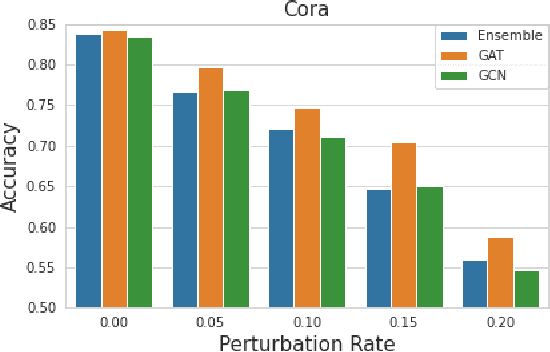
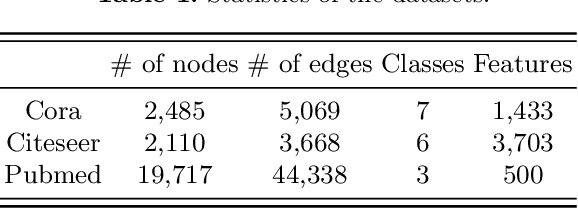
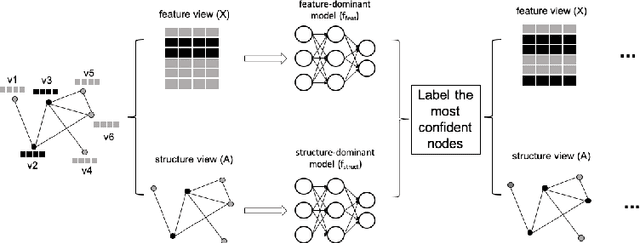
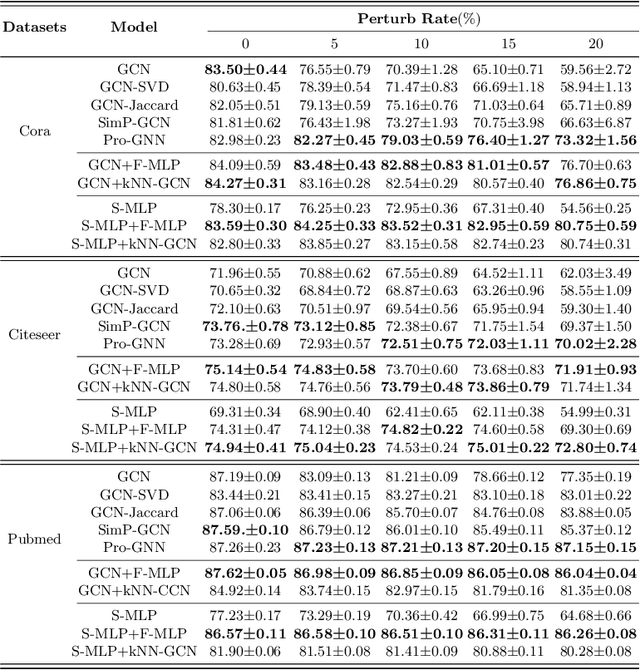
Abstract:Graph neural networks exhibit remarkable performance in graph data analysis. However, the robustness of GNN models remains a challenge. As a result, they are not reliable enough to be deployed in critical applications. Recent studies demonstrate that GNNs could be easily fooled with adversarial perturbations, especially structural perturbations. Such vulnerability is attributed to the excessive dependence on the structure information to make predictions. To achieve better robustness, it is desirable to build the prediction of GNNs with more comprehensive features. Graph data, in most cases, has two views of information, namely structure information and feature information. In this paper, we propose CoG, a simple yet effective co-training framework to combine these two views for the purpose of robustness. CoG trains sub-models from the feature view and the structure view independently and allows them to distill knowledge from each other by adding their most confident unlabeled data into the training set. The orthogonality of these two views diversifies the sub-models, thus enhancing the robustness of their ensemble. We evaluate our framework on three popular datasets, and results show that CoG significantly improves the robustness of graph models against adversarial attacks without sacrificing their performance on clean data. We also show that CoG still achieves good robustness when both node features and graph structures are perturbed.
STA: Adversarial Attacks on Siamese Trackers
Sep 08, 2019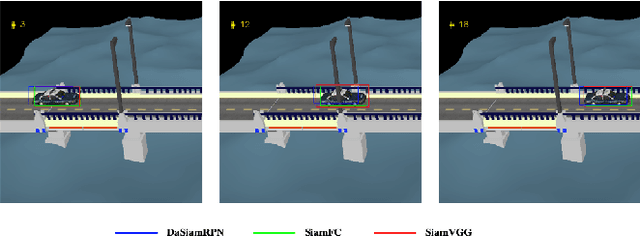

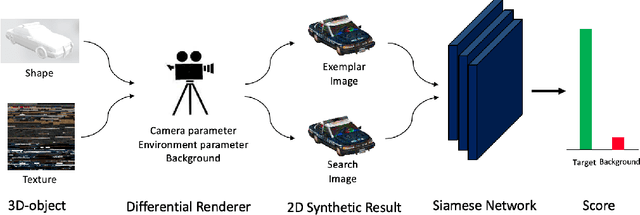
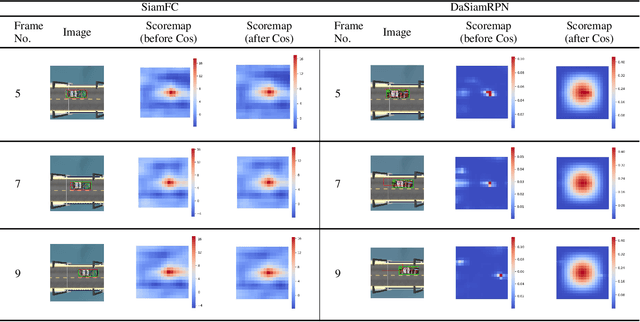
Abstract:Recently, the majority of visual trackers adopt Convolutional Neural Network (CNN) as their backbone to achieve high tracking accuracy. However, less attention has been paid to the potential adversarial threats brought by CNN, including Siamese network. In this paper, we first analyze the existing vulnerabilities in Siamese trackers and propose the requirements for a successful adversarial attack. On this basis, we formulate the adversarial generation problem and propose an end-to-end pipeline to generate a perturbed texture map for the 3D object that causes the trackers to fail. Finally, we conduct thorough experiments to verify the effectiveness of our algorithm. Experiment results show that adversarial examples generated by our algorithm can successfully lower the tracking accuracy of victim trackers and even make them drift off. To the best of our knowledge, this is the first work to generate 3D adversarial examples on visual trackers.
 Add to Chrome
Add to Chrome Add to Firefox
Add to Firefox Add to Edge
Add to Edge